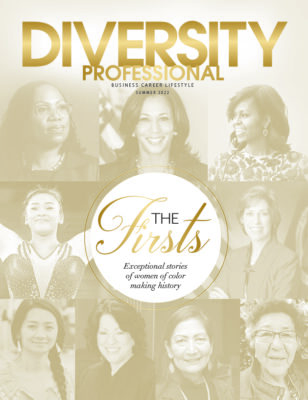Working In A Gray Area
WHY OLDER WORKERS AREA A VALUE PROPOSITION

Success is often determined by the ability to find value where others do not. For many leaders, value is the most compelling business case supporting workplace diversity, and advances have been made in that regard. However, one particular area of workplace diversity has been given scant attention. That’s about to change. This time, it’s not going to be about black or white or yellow or red; it’s going to be gray.
In a report issued by AARP and conducted by consulting firm AON Hewitt, the number of senior or retirement-aged staff was at a staggering high. “A Business Case for Workers Age 50+: A Look at the Value of Experience 2015” presented statistics that predict a growing trend:
U. S. employees 65+ now outnumber teenagers in the workplace for the first time since 1948. In 2002, workers 50+ made up 24.6 percent of the workforce. By 2012, they were 32.3 percent. And by 2022, they are projected to be 35.4 percent of the total workforce…This trend isn’t likely to change anytime soon.
Building on its seminal report, AARP released the 2015 study to herald in a new era where older workers will be successfully integrated into the workforce. But we’re not there yet. The report also serves as both a justification and a guide for the proposition:
[The report] debunks many of the widely held misperceptions about the costs of 50+ workers and demonstrates that employers should view workers 50+ as an essential part of the plan to meet their workforce needs. It also highlights the need for employers to consider costs with a broader lens and demonstrates that recruiting and retaining workers 50+ is a sound business strategy. Finally, it shows how to develop and implement an effective strategy for retaining and recruiting workers 50+. By understanding how the changing demographics of the workforce impact business and by viewing workers 50+ as a solution to meeting workforce needs, companies can compete and win in the evolving global marketplace.
The evidence is stark. Mature workers can provide much-needed expertise, maturity, grit, loyalty and flexibility. So why does ageism persist? What makes many businesses ignore an entire pool of qualified candidates?
“Diversity, Older Workers and the Changing Character of the Domestic Workforce” is a 2015 report from Daubenspeck and Associates that addresses crippling stereotypes:
U.S. employees 65+ now outnumber teenagers in the workplace for the first time since 1948.
There is the assumption that older employees will seek more accommodations, including higher-level compensation, as well as the false perception that older employers approach their jobs with less energy and rigidity in thinking that diminishes an ability to view things with a fresh perspective. These attitudes are somewhat widespread and come to have credence and influence when it comes to hiring decisions. And while this is not necessarily borne of conscious age discrimination, the root of it is based on widely held stereotypes regarding older workers.
The report identifies six of those widely held stereotypes: Those over age 50 are perceived as less motivated, less willing to engage in training and career development, resistant to change, untrusting, more likely to experience health problems and more vulnerable to work-family conflicts. Two researchers, Thomas W.H. Ng and Daniel C. Feldman of the University of Hong Kong and the University of Georgia, added that “nearly all negative stereotypes about this group are unfounded.” Indeed, of the six stereotypes examined, Ng and Feldman found only one held any truth.that “older workers are, on average, less likely to engage in career development.” But they also pointed out many career development programs are aimed specifically at younger generations. So what are the advantages to including workers over age 50 in the general workforce?
Mature workers generally bring greater expertise and experience to the table. With poise, professionalism, maturity, reliability and a strong work ethic, such individuals add tremendous value to the bottom line and culture of an organization. Also, these individuals have already raised their children and are less likely to get called away for family emergencies. Because of their experience and these other traits, they often provide stability and mentorship to younger personnel, helping to create a more professional culture that also increases productivity. But there is an elephant in the room when it comes to older workers. What about technology and their ability to adapt?
Many joke older workers tend not to panic when an internet connection goes out as they well remember the time before the internet existed. Yet study after study shows this age group is just as adaptable to using technology as younger workers.
Certain companies, particularly tech firms, have an inherent bias toward younger generations. In “Older Workers Are Most Engaged, Boost Revenues,” an article for the Society for Human Resource Management, Dana Wilkie pointed out that “[c]ompanies like Apple, Yahoo and Dropbox have advertised for ‘digital natives’-a term some lawyers say is code for ‘young worker’.” Ads like this prompted a federal class-action ageism lawsuit against Google.
In fact, one particular arena that is often associated with young people only is also receiving something of an overhaul-new-business startups. According to the Kauffman Foundation, 26 percent of all U.S. start-ups in 2015 were created by people between the ages of 55 and 64. In 1997, that figure was 15 percent.
Two elements are converging right now that will produce previously unfound value. Our population is aging, and experienced workers are needed. There is an extremely large pool of valuable, talented candidates who have been ignored or denied work simply because of their age. Fortunately, that is about to change as many businesses and other organizations are recognizing the value in the gray area.









